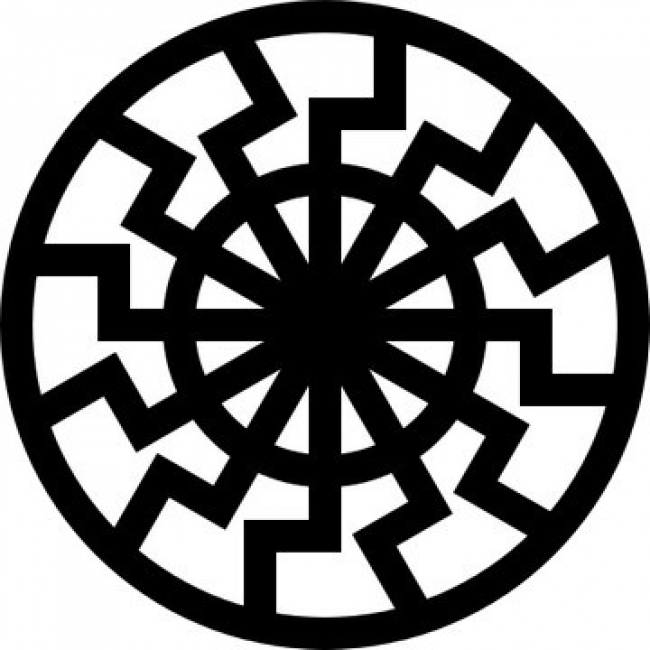
Other names:
Known as the Schwarze Sonne in German.
Origin:
The idea of the black sun as the ordinary sun’s opposite can be traced back to esoteric and occult movements of the mid-19th century. Its modern incarnation was most likely designed for the SS (the German Schutzstaffeln or security services).
Uses:
Some neo-pagan and Satanist cults use the black sun as an esoteric symbol, and it was also used as an esoteric symbol in Nazi occultism.
The black sun was displayed in one of the main halls of the SS headquarters, Wewelsburg Castle.
Since the 1950s, it has been a symbol of esoteric Hitlerism, which is a kind of synthesis of occult teachings, mysticism, and Nazism.
Use as a hate symbol:
The symbol was popularized in 1991, in the German novel The Black Sun of Tashi Lhunpo by Russell McCloud (the pseudonym of German journalist Stefan Mogle-Stadel). Since then, neo-Nazis in various countries have actively used it as a symbol of occult Nazi teachings that allegedly connects Nazism to “ancient secret knowledge.”
In Ukraine, it’s often used as a marker of far-right ideology. It was included in the former emblem of the Azov volunteer regiment (now a special detachment force of Ukraine’s National Guard), as well as in the emblem of the far-right tourist club Edelweiss (a Carpathian Sich subsidiary). It is also included in the name of the magazine that Azov distributes. It has no esoteric significance in Ukraine.
The black sun is occasionally used mistakenly as a fashionable, aesthetic symbol, or sometimes taken to symbolize something Scandinavian or ancient Slavic.

Emblem of Azov Battalion (from 2014 to spring 2015)

Poster for concert with right-wing musical groups
